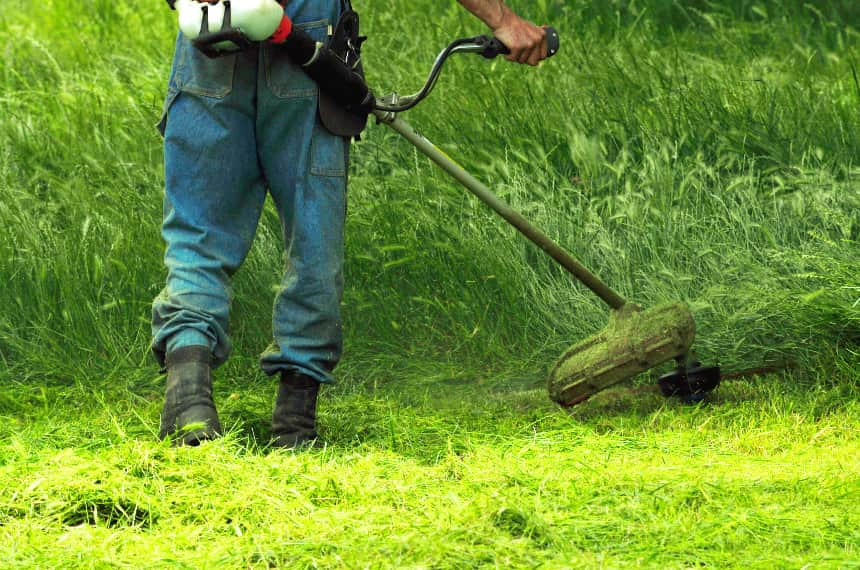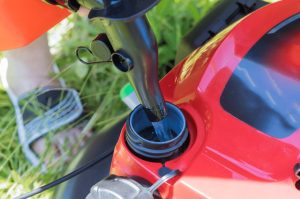More than an old-fashioned phrase describing exuberant youth, the whipper snipper is one of your go-to yard tools, often called a string trimmer or blade cutter. While there are many different brand names for a whipper snipper, the consistent factor is a lightweight spinning tool that typically uses a “string” head to cut vegetation and is attached to a long handle, typically a metre long or taller.
Yet, while there are many consistencies in what makes a whipper snipper, there are also details that can make a huge difference in how you get the job done. Different tool heads (the cutting part) will have different abilities to feed thread into the tool, different sharpness settings depending on the head, and different levels of durability.
An easy way to understand this is a heavy-duty tool head versus a lighter or mid-duty head. Each head is designed for a different job or vegetation.
Learn how to choose the right whipper snipper head for your yard.
Whipper snipper overview
While you might look for names including Weedwacker, Weed Eater, and Whipper Snipper, many whipper snippers can use universal and interchangeable brand heads.
The principle involved is based on spinning and centrifugal force. The heads all attach to a spinner, and a faster spin typically means more cutting power. With a spinning blade, this cutting is relatively straightforward, relying on the movement of a sharp blade. When using a string-based head, you’ll find that this cutting force is also based on simple principles. As the string spins at speed (typically a durable synthetic “string”), it will force the line to become straight and rigid, the perfect cutting tool for stubborn brush and grass based on physics.
While there are benefits to each whipper snipper head type, choosing the right tool for the job is important.
What types of line trimming heads are there?
Line trimming heads are the type that operates off of the centrifugal physics principle of spinning a line until it is rigid and cutting vegetation with force. You might use a line head for stubborn weeds or to tame wayward landscape plants like couch grass runners. You will typically use a line head trimmer in conjunction with other vegetation and landscape control methods, such as smart planting, watering, or even permaculture.
Line trimmer heads are typically sold as:
- Bump feed heads
- Automatic feed heads
- Fixed line heads
- Brush cutter blades
The physical difference between these styles is based on how the coiled line is fed out of the whipper snipper’s spinning component and the landscape tool’s intended use.
The best type of string will be strong and long-lasting. Depending on your tool, you can also buy different sizes, minimising the time you’ll need to stop and change your trimmer head roll. The string will eventually break no matter which head type you choose – it’s not titanium or steel!
1. Bump feed heads
The bump feed head is one of the more traditional styles of whipper snipper string heads. Often found on more basic or older models, these heads require you to “bump” the end of the tool to get more string to feed. While this bump feed head requires a little user learning curve, problems are inherent in having to bump your tool, including possible breakage regularly.
While there is little note about cutting power on a bump head feed, if you are using the trimmer to clear heavy-duty plant life, regularly whacking your tool on the ground is likely to make the job more difficult.
2. Automatic feed heads
The automatic feed head is a technological solution for those who dislike bump head trimmers. Using an internal sensor, automatic feed heads will sense the length of your remaining string and automatically feed more string from the trimmer head as needed. Many people enjoy this trimming method because minimal maintenance is needed to continue working on the job.
A disadvantage of automatic feed heads, however, is the complexity of the technology, which can be easier to break than a bump-head spring mechanism, and the trimmer heads can have a higher cost to purchase.
3. Fixed line heads
A fixed line head skips the above-coiled string altogether. Instead, these trimmer heads use a precut string “strip” with no winding. Prized for its simplicity in skipping windy installation, the fixed line also has limits to its lifespan, so it is best recommended for small or medium-sized yard work.
4. Brush cutter blades
The brush cutter is a spinning blade head for a whipper snipper instead of a string line trimmer. Brush cutter blades are designed for heavier-duty jobs such as invasive weeds or sturdier shrubs.
Brush cutter heads can come in different strengths and sharpness for medium and heavy-duty landscape jobs. Bladed whipper snipper heads tend to be more durable than string heads and cost more based on this heavier construction.
How to choose the right whipper snipper head
Consider your landscape needs when choosing a whipper snipper head. Understand the cost and maintenance of the whipper snipper head, the type of vegetation, and the total area you need to cut.
Key takeaways
- Whipper snipper heads are designed for different jobs. Choose the right one based on your own landscape needs.
- Line-based trimmers will cut and operate differently than blade-based heads; ensure you use the correct head for the job!
FAQs
1. Can I use any type of whipper snipper head for my specific model?
Most whipper snipper models can use many different types and brands of universal heads, but always check your specific model before purchasing.
2. How do I change a whipper snipper head?
Whipper snipper heads are meant to be changed by the tool owner. Check your users manual for specifics.
3. Are there specific line trimming heads that work better for certain types of vegetation?
String trimmers are favoured for lighter vegetation while brush cutter blades are favoured for heavier jobs. Coiled string is favoured above fixed feed heads for larger yards and business landscapes.
4. Is it possible to use a brush cutter blade for regular grass trimming?
A brush cutter blade may be able to trim regular grass, but it is not as efficient as a string trimmer and not recommended.






